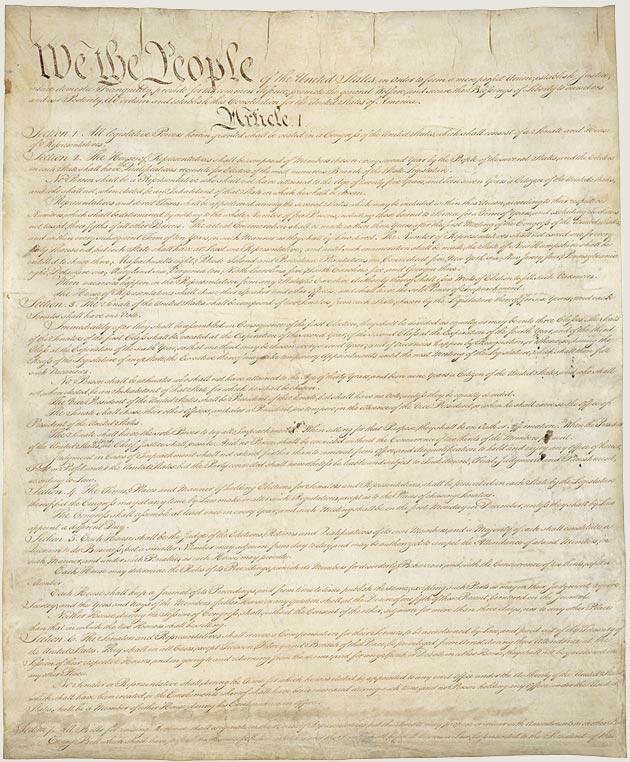Example Description
The document under consideration is the Constitution of the United States. It consists of four pages that are permanently displayed at the National Archives.

The document includes a preamble and seven articles dedicated to government structure and functioning. Thus, it establishes the role of legislative, executive, and judicial powers. Also, the Constitution determines the relationship between the Federal Government and the states, identifies the Constitution as the principal law of the country, and explains how amendment and ratification processes are conducted.
Origins and Context
Several years after the Revolutionary War, America was guided by its first constitution, the Articles of Confederation. The division of power among the Confederation Congress and the states was not adequate and led to many disputes related to territory issues, taxation, and trade, which could result in a collapse. At that time, Hamilton persuaded Congress to gather a Grand Convention of state delegates to discuss the problems and revise the Articles of Confederation. The Constitutional Convention gathered in spring of 1787 and worked for months because there was no agreement among the delegates about such principal issues as representation in Congress or autonomy of states. Finally, the document was signed in September of 1787 by 38 of the 42 representatives of the Convention and the process of ratification began. It was marked by disputes between Federalists and Anti-Federalists who could not agree about the type of government that the country needed.
Contemporary Issues in Government
Since the Constitution is a primary document of the country, certain issues constantly raise in government. Still, in the context of American Constitution, amendments provide more ground for disputes. For example, one of the recent issues actively discusses in government, courts, and by public is the First Amendment to the Constitution (Cole, 2018). It claims that congress cannot interfere into religious issues, limit the freedom of speech, press, or the right of people to assemble. The current problem is that critics claim that the First Amendment was “once an important safeguard for progressive speech” and now it “has become a boon to corporations, conservatives and the powerful” (Cole, 2018, para. 2). Some individuals suppose that the problem of the First Amendment is in its neutrality, which does not provide equal rights in unequal society. Consequently, all the rights granted by the Constitution are more available for prosperous people and the poor remain unprotected. On the whole, the First Amendment is considered to embody the quintessence of democracy.
References
Cole, D. (2018). Liberals, don’t lose faith in the First Amendment. The New York Times. Web.
National Archives. (2018). The Constitution of the United States. Web.